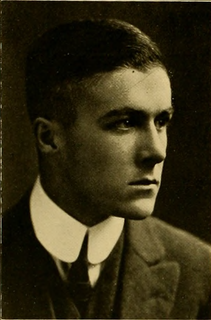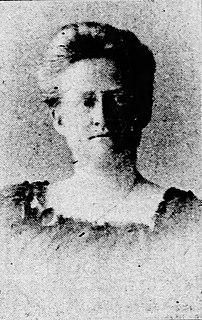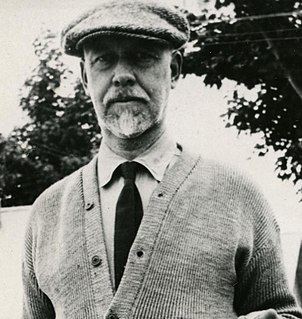
Carnegie Mellon University (CMU) is a private research university based in Pittsburgh, Pennsylvania. Founded in 1900 by Andrew Carnegie as the Carnegie Technical Schools, the university became the Carnegie Institute of Technology in 1912 and began granting four-year degrees. In 1967, the Carnegie Institute of Technology merged with the Mellon Institute of Industrial Research, formerly a part of the University of Pittsburgh, to form Carnegie Mellon University. With its main campus located 3 miles (5 km) from Downtown Pittsburgh, Carnegie Mellon has grown into an international university with over a dozen degree-granting locations in six continents, including degree-granting campuses in Qatar and Silicon Valley, and more than 20 research partnerships.

Daniel Coit Gilman was an American educator and academic. Gilman was instrumental in founding the Sheffield Scientific School at Yale College, and subsequently served as the second president of the University of California, Berkeley, as the first president of Johns Hopkins University, and as founding president of the Carnegie Institution. He was also co-founder of the Russell Trust Association, which administers the business affairs of Yale's Skull and Bones society. Gilman served for twenty five years as president of Johns Hopkins; his inauguration in 1876 has been said to mark "the starting point of postgraduate education in the U.S."

The Carnegie Corporation of New York is a philanthropic fund established by Andrew Carnegie in 1911 to support education programs across the United States, and later the world. Carnegie Corporation has endowed or otherwise helped to establish institutions that include the United States National Research Council, what was then the Russian Research Center at Harvard University, the Carnegie libraries and the Children's Television Workshop. It also for many years generously funded Carnegie's other philanthropic organizations, the Carnegie Endowment for International Peace (CEIP), the Carnegie Foundation for the Advancement of Teaching (CFAT), and the Carnegie Institution for Science (CIS).
Charles V. Park was a noted librarian. The Charles V. Park Library at Central Michigan University is named after him. He was born in Hill City, Kansas. His parents were Abraham and Lovina Park. He married Frances Odenheimer on September 1, 1917 in Los Angeles, California. They had a son and daughter together, James "Ted" and Mrs. Ray (Persis) Rynberg.

David E. Bloom is an American author, professor, economist, and demographer. He is Professor of Economics and Demography at the Harvard School of Public Health, and director of the Program on the Global Demography of Aging.
Education for librarianship, including for paraprofessional library workers, varies around the world, and has changed over time. In recent decades, many institutions offering librarianship education have changed their names to reflect the shift from print media to electronic media, and to information contained outside of traditional libraries. Some call themselves schools of library and information science, or have dropped the word "library" altogether.

James G. Neal is an American librarian, library administrator, and a prominent figure in American and international library associations.

Douglas Waples was a pioneer of the University of Chicago Graduate Library School in the areas of print communication and reading behavior. Waples authored one of the first books on library research methodology, a work directed at students supervised through correspondence courses. Jesse Shera credits Waples’s scholarly research into the social effects of reading as the foundation for the approaches to the study of knowledge known as social epistemology. In 1999, American Libraries named him one of the "100 Most Important Leaders We Had in the 20th Century".

Foster Edward Mohrhardt was a United States librarian. He had a long and illustrious career in library and information science as a scholar, organizer and diplomat, and was listed by American Libraries among "100 Leaders we had in the 20th Century". Mohrhardt is also known for his work to have the United States Department of Agriculture Library re-designated as a national library.
Maurice Falcom Tauber was an influential librarian, educator and researcher in the field of library and information sciences; he was a major actor in how technical services units in American and in international libraries were thought of and how they evolved in the 20th century. Tauber is remembered especially for his role as professor and mentor during his long tenure at Columbia University from 1944-1976. In 1999, American Libraries named him one of the "100 Most Important Leaders We Had in the 20th Century".

Sarah Comly Norris Bogle was an American librarian most noted for her influence in establishing education for librarianship. Her achievements lay in creating a system which enabled the American Library Association to accredit existing library school programs. She is considered one of the most influential librarians in the field of library science due to her efforts in implementing a universal curriculum in order to teach students the fundamentals of library science.
Mary Virginia Gaver was a United States librarian. She was considered by one source to be one of the most important leaders in library science in the 20th century.
Leon Carnovsky was a librarian and educator who focused much of his time to the survey of libraries in the United States and around the globe. Carnovsky was recognized by American Libraries as being one of the 100 most influential figures in Library and Information Sciences.

Ralph W. Munn was an eminent figure in the field of American and international library and information science. Recognized by the journal American Libraries as one of "100 of the most important leaders we had in the 20th century", and described as an "administrator, educator, and author ... known for his fairness, clarity, and grace", he was also widely known within the profession as "the father of the modern library movement in Australia and New Zealand".

William Warner Bishop was an American librarian who is credited and remembered for his work organizing and cataloging the Vatican Archives, his time served working with the American Library Association, as well as his support of academic libraries. He has the honor of being named one of the most influential librarians in American history.
Ernest LeRoy Boyer was an American educator who most notably served as Chancellor of the State University of New York, United States Commissioner of Education, and President of the Carnegie Foundation for the Advancement of Teaching. Boyer was recipient of numerous awards, including over 140 honorary doctorates.
Frank J. Newman was a US education reformer and administrator who produced the Newman Reports, two ground-breaking reports on higher education in the United States that were published in 1971 and 1974. He served as the eighth President of the University of Rhode Island (1974–1983).

A public library is a library that is accessible by the general public and is generally funded from public sources, such as taxes. It is operated by librarians and library paraprofessionals, who are also civil servants.
A librarian is a person who works professionally in a library, and may hold a degree in librarianship.
Tommie Dora Barker was an American librarian and founding dean of Emory Library School in Atlanta, Georgia. She also served as a regional field agent, representing southern libraries, for the American Library Association.











